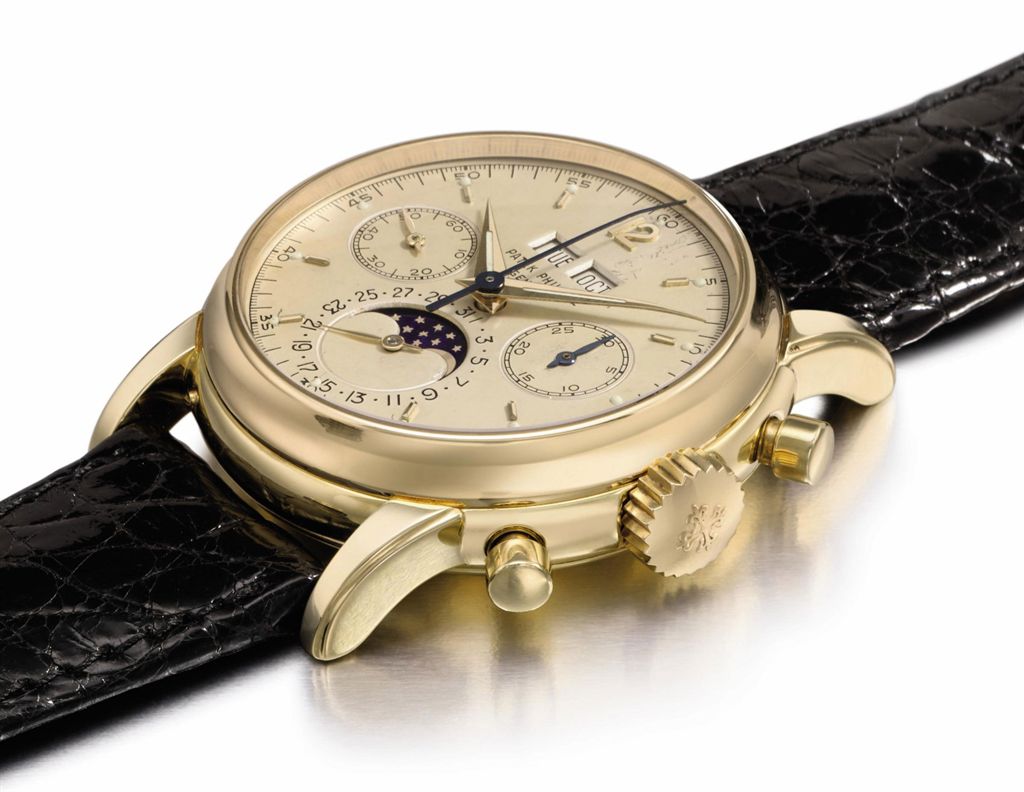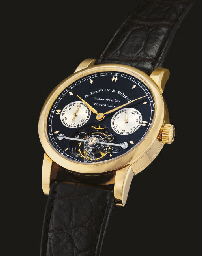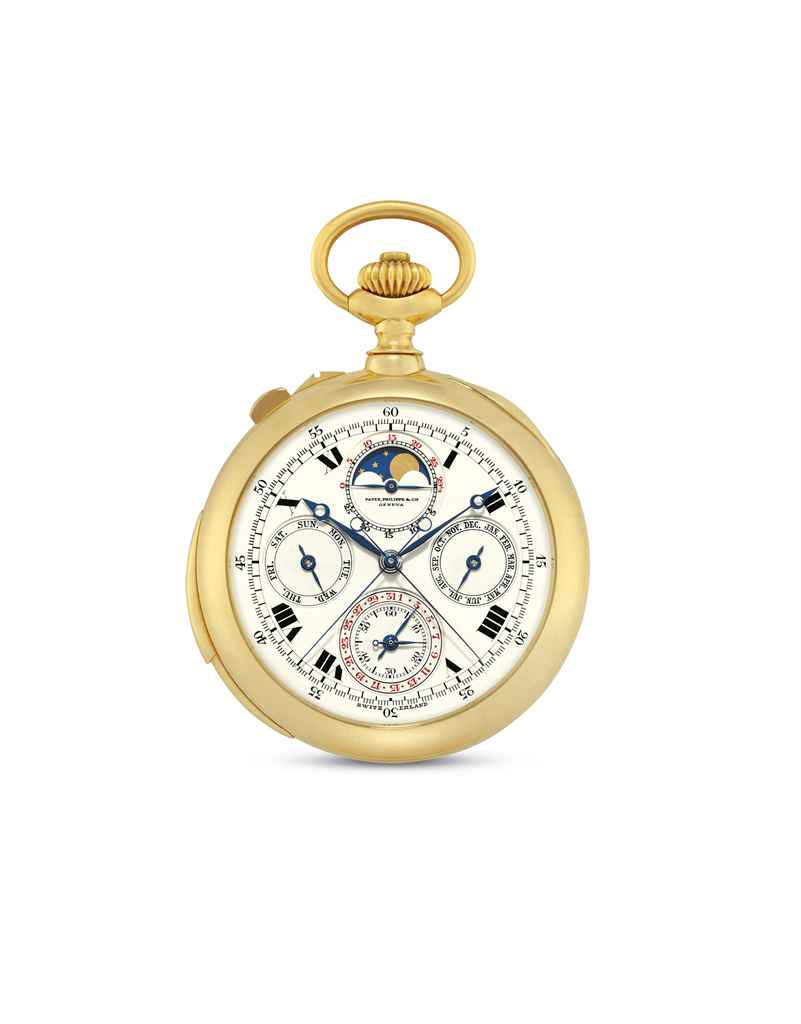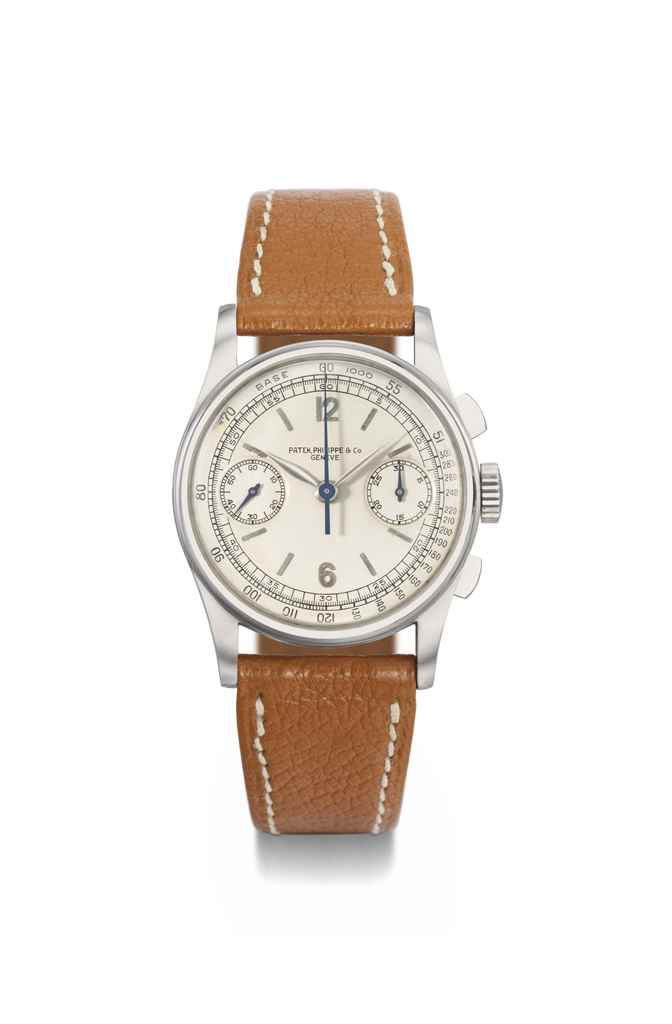A FINE AND RARE QUEEN ANNE JAPANNED THIRTY-HOUR LONGCASECLOCK JOSEPH KNIBB HANSLOPE, CIRCA 1705 The single-handed posted countwheel bell striking movement with steel square section corner uprights and resting on threaded extensions passing through the underside of the baseplate, the going train with anchor escapement regulated by seconds pendulum, the strike train sounding on a large bell mounted above, the 10 inch square gilt brass dial with fine pierced iron hand to the matted centre within applied silvered Roman numeral chapter ring with stylised fleur-de-lys half hour markers and signed Joseph Knibb at Hanslop to lower margin, the spandrel areas engraved with large stylised leafy motifs within scribed line border, in a japanned pine case with spoon locking mechanism to the rising hood incorporating substantial ogee moulded cornice delicately painted with gilt floral motifs on a chocolate ground over conforming recessed panel fronted frieze and fixed glazed dial aperture applied with turned three-quarter columns decorated with leafy trails, the sides with rectangular windows and conforming quarter columns set against bargeboards at the rear, the trunk with gilt trellis painted convex throat moulding and 44 inch rectangular door decorated in raised polychrome and gilt with figures within an oriental garden landscape, the surround incorporating gilt hatched panels, the sides with stylised foliate trails within shaped scribed line borders, the ogee moulded base with conforming raised decoration to front and bun feet. 209cm (82.25ins) high, 44.5cm (17.5ins) wide, 28cm (11ins) deep. Joseph Knibb was born the fifth son of Thomas Knibb of Claydon, Oxfordshire in 1640. He is generally thought to have been apprenticed in around 1655 to his cousin Samuel Knibb in Newport Pagnell, before moving to Oxford circa 1662 (the same year that Samuel moved to London). Joseph initially struggled to trade in Oxford due to restrictions placed by the City authorities which were only relaxed on payment of a fine in 1668. It was about at this time that Joseph Knibb would have issued his copper trade tokens (an example of which was sold in these rooms 10th February 2009, lot 104 for £1,600 hammer) as well looking to undertake work to convert the turret clocks of St. Mary the Virgin and Wadham College to anchor escapement with long pendulum. In 1670 Joseph moved to London handing over the Oxford business to his younger brother; the reason for this move was probably to administer the estate of Samuel who is thought to have died by the summer of 1671. Joseph Knibb presumably took on Samuel's former workshop as by 1675 he was recorded as working from 'The Dyal' near Sargeants Inn in Fleet Street. By 1693 he had moved to 'The Clock Dyal' Suffolk Street, near Charing Cross. As Joseph became established in London his work became more individual/distinctive, often demonstrating an inventive and refined approach both in the detailing and specification of the movements and choice of case design. He is perhaps best known for his experimentation with alternative striking such as Dutch, Roman and double-six grande sonnerie as well as long duration clocks. In 1697 Joseph Knibb sold up the London business (presumably to Samual Aldworth, former apprentice of John Knibb of Oxford) and retired to his property at Green End, Hanslope, Buckinghamshire where he died in December 1711. Clocks made by Joseph Knibb during his 'retirement' years in Hanslope, Buckinghamshire are particularly rare; indeed only one example, a walnut eight-day longcase clock, is illustrated in Lee, Ronald A. The Knibb Family * Clockmakers on page 39 (plate 38). Another walnut longcase was sold at Christies, King Street, London on Wednesday 18th December 1974 (lot 193) for 6,300 guineas and a third (in a marquetry case) was offered by Sotheby's, London on Thursday 18th February 1982. All of these three examples appear to have been made with features typical of the Knibb workshops which would perh
A FINE AND RARE QUEEN ANNE JAPANNED THIRTY-HOUR LONGCASECLOCK JOSEPH KNIBB HANSLOPE, CIRCA 1705 The single-handed posted countwheel bell striking movement with steel square section corner uprights and resting on threaded extensions passing through the underside of the baseplate, the going train with anchor escapement regulated by seconds pendulum, the strike train sounding on a large bell mounted above, the 10 inch square gilt brass dial with fine pierced iron hand to the matted centre within applied silvered Roman numeral chapter ring with stylised fleur-de-lys half hour markers and signed Joseph Knibb at Hanslop to lower margin, the spandrel areas engraved with large stylised leafy motifs within scribed line border, in a japanned pine case with spoon locking mechanism to the rising hood incorporating substantial ogee moulded cornice delicately painted with gilt floral motifs on a chocolate ground over conforming recessed panel fronted frieze and fixed glazed dial aperture applied with turned three-quarter columns decorated with leafy trails, the sides with rectangular windows and conforming quarter columns set against bargeboards at the rear, the trunk with gilt trellis painted convex throat moulding and 44 inch rectangular door decorated in raised polychrome and gilt with figures within an oriental garden landscape, the surround incorporating gilt hatched panels, the sides with stylised foliate trails within shaped scribed line borders, the ogee moulded base with conforming raised decoration to front and bun feet. 209cm (82.25ins) high, 44.5cm (17.5ins) wide, 28cm (11ins) deep. Joseph Knibb was born the fifth son of Thomas Knibb of Claydon, Oxfordshire in 1640. He is generally thought to have been apprenticed in around 1655 to his cousin Samuel Knibb in Newport Pagnell, before moving to Oxford circa 1662 (the same year that Samuel moved to London). Joseph initially struggled to trade in Oxford due to restrictions placed by the City authorities which were only relaxed on payment of a fine in 1668. It was about at this time that Joseph Knibb would have issued his copper trade tokens (an example of which was sold in these rooms 10th February 2009, lot 104 for £1,600 hammer) as well looking to undertake work to convert the turret clocks of St. Mary the Virgin and Wadham College to anchor escapement with long pendulum. In 1670 Joseph moved to London handing over the Oxford business to his younger brother; the reason for this move was probably to administer the estate of Samuel who is thought to have died by the summer of 1671. Joseph Knibb presumably took on Samuel's former workshop as by 1675 he was recorded as working from 'The Dyal' near Sargeants Inn in Fleet Street. By 1693 he had moved to 'The Clock Dyal' Suffolk Street, near Charing Cross. As Joseph became established in London his work became more individual/distinctive, often demonstrating an inventive and refined approach both in the detailing and specification of the movements and choice of case design. He is perhaps best known for his experimentation with alternative striking such as Dutch, Roman and double-six grande sonnerie as well as long duration clocks. In 1697 Joseph Knibb sold up the London business (presumably to Samual Aldworth, former apprentice of John Knibb of Oxford) and retired to his property at Green End, Hanslope, Buckinghamshire where he died in December 1711. Clocks made by Joseph Knibb during his 'retirement' years in Hanslope, Buckinghamshire are particularly rare; indeed only one example, a walnut eight-day longcase clock, is illustrated in Lee, Ronald A. The Knibb Family * Clockmakers on page 39 (plate 38). Another walnut longcase was sold at Christies, King Street, London on Wednesday 18th December 1974 (lot 193) for 6,300 guineas and a third (in a marquetry case) was offered by Sotheby's, London on Thursday 18th February 1982. All of these three examples appear to have been made with features typical of the Knibb workshops which would perh















Testen Sie LotSearch und seine Premium-Features 7 Tage - ohne Kosten!
Lassen Sie sich automatisch über neue Objekte in kommenden Auktionen benachrichtigen.
Suchauftrag anlegen